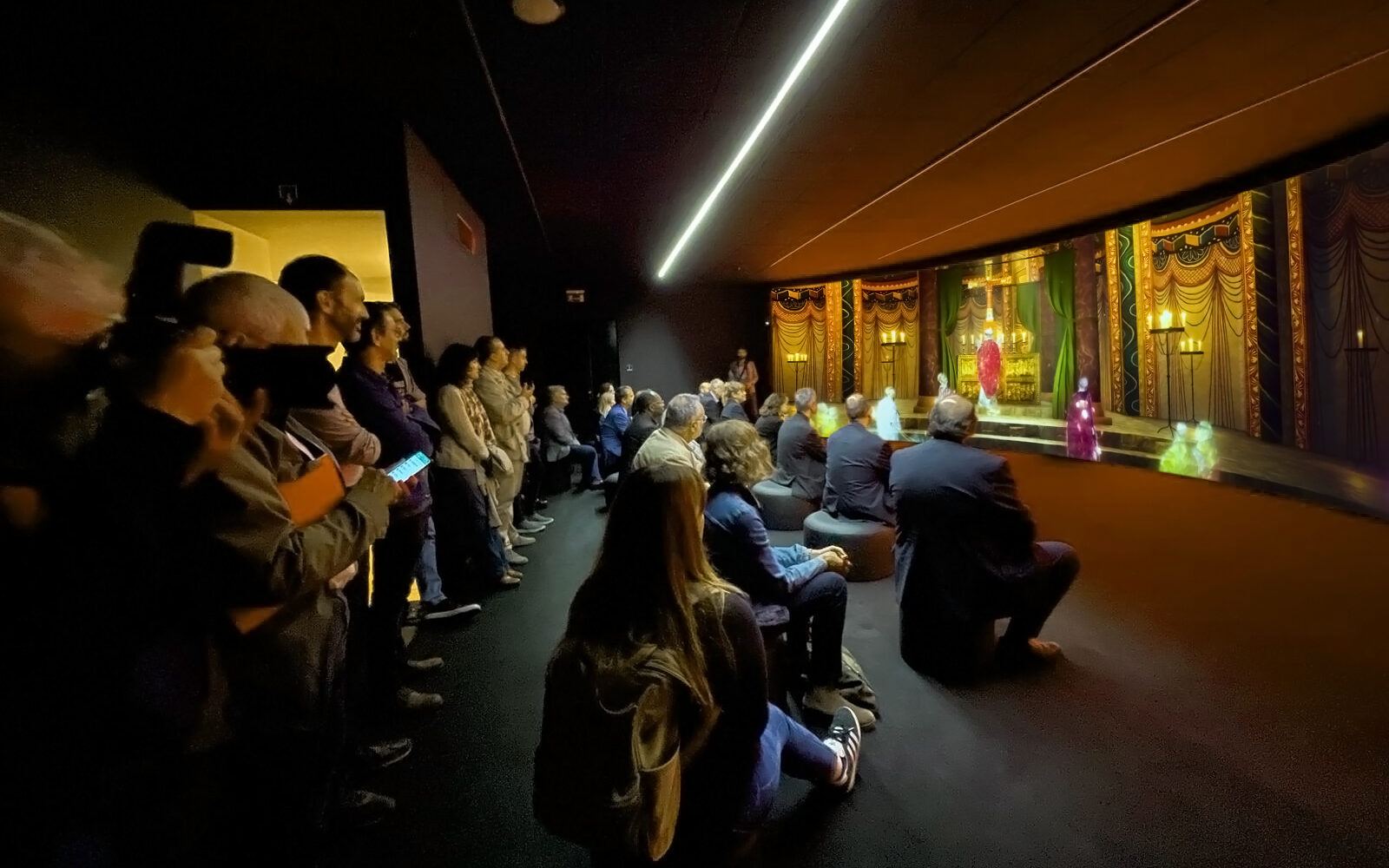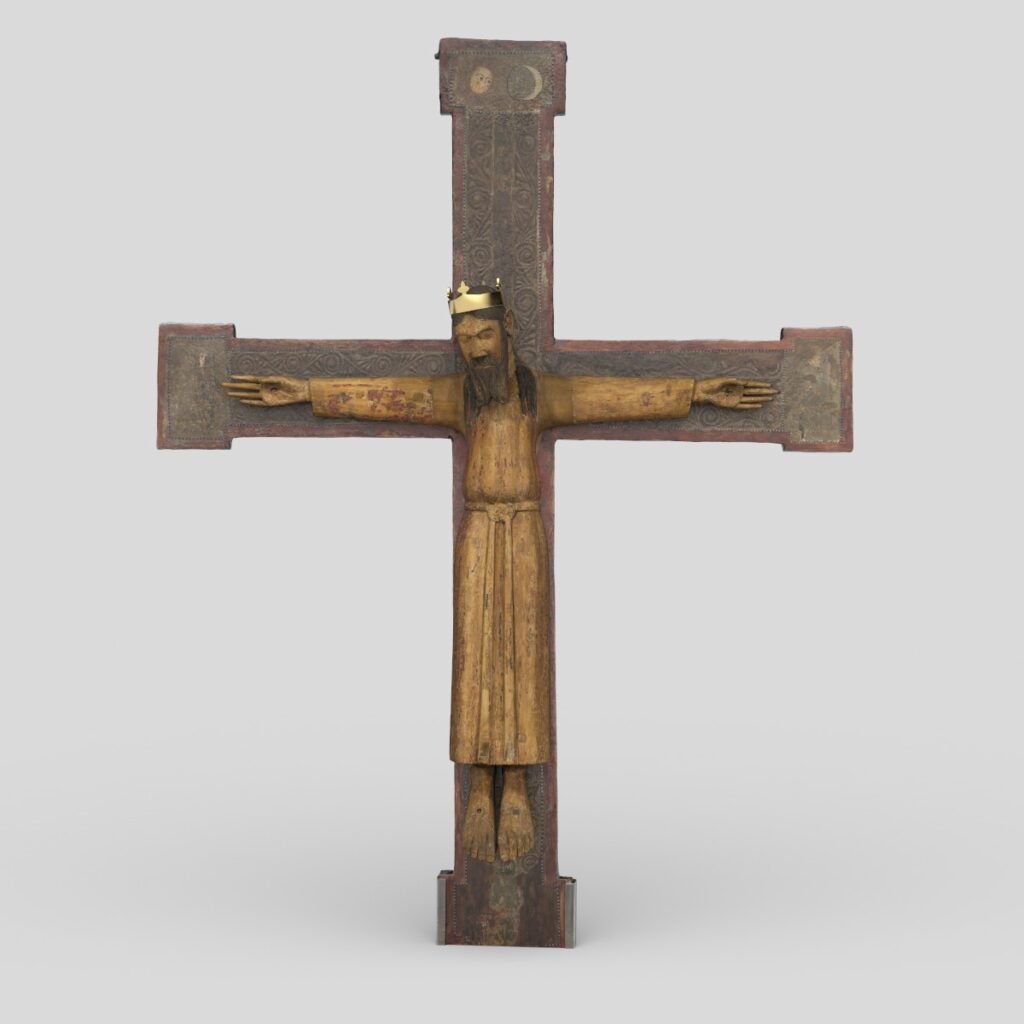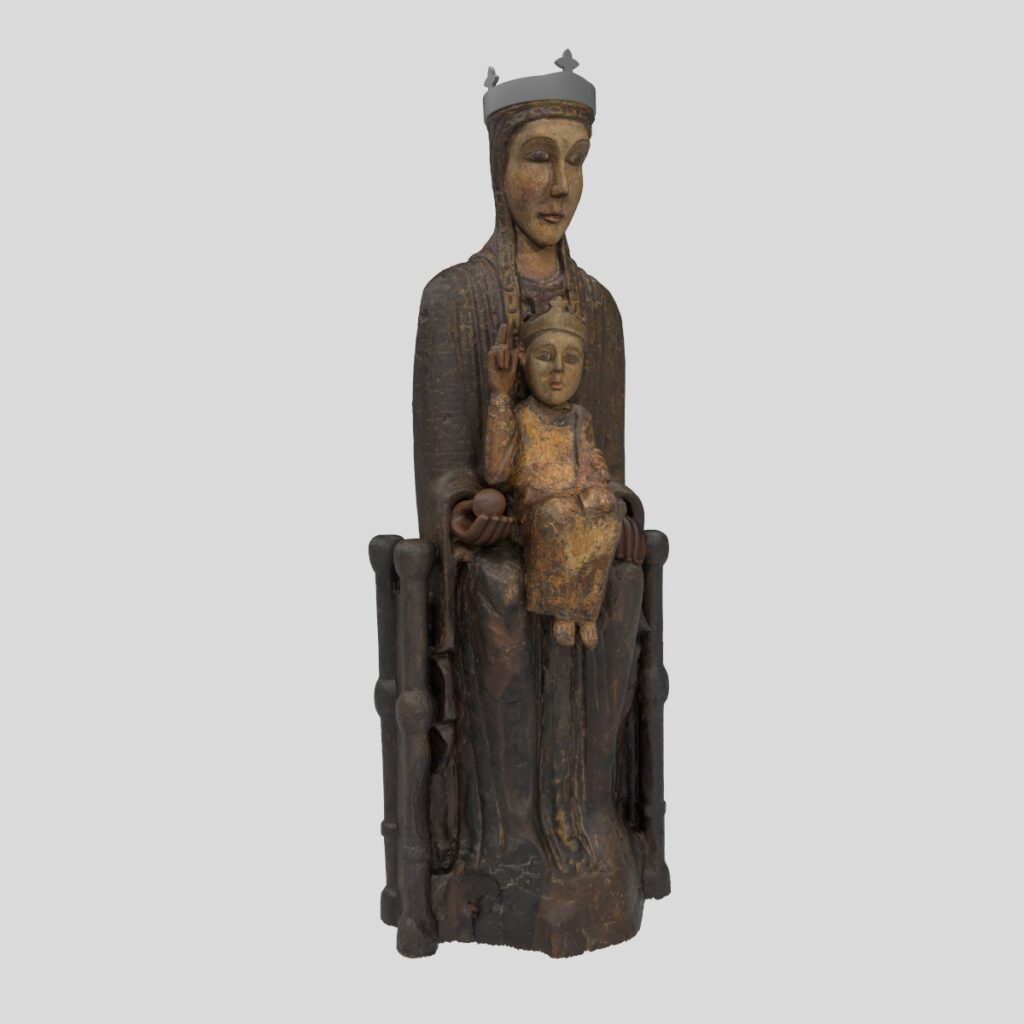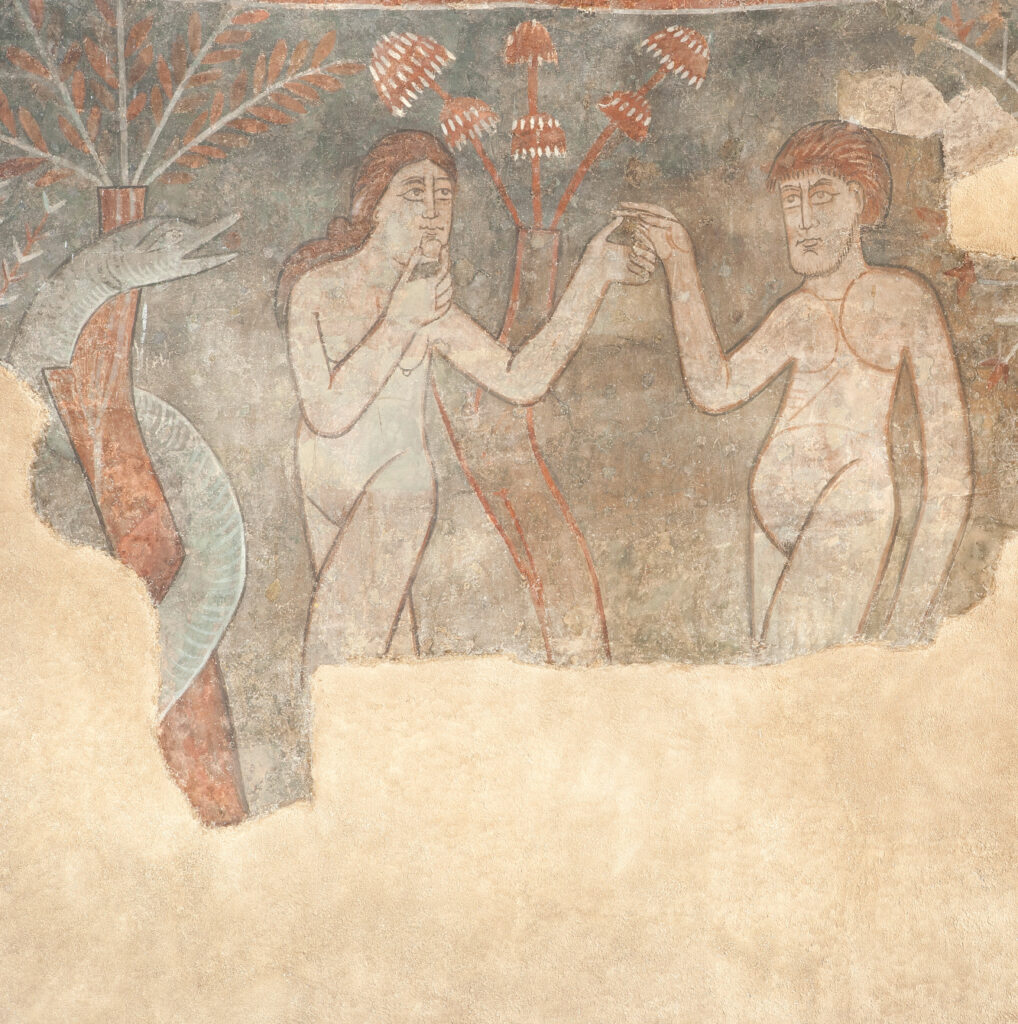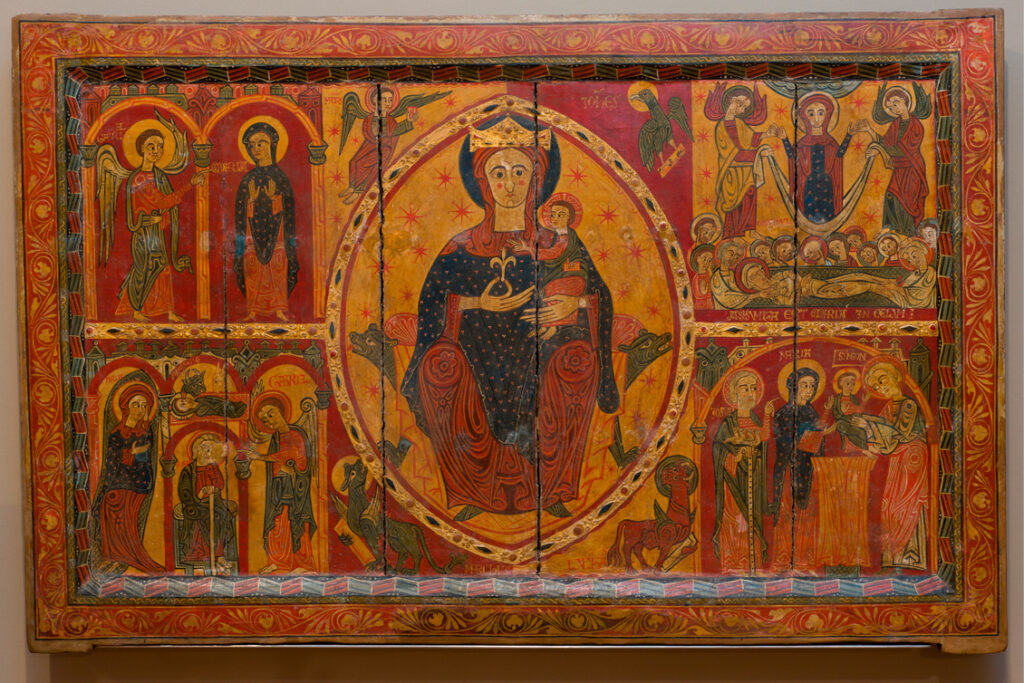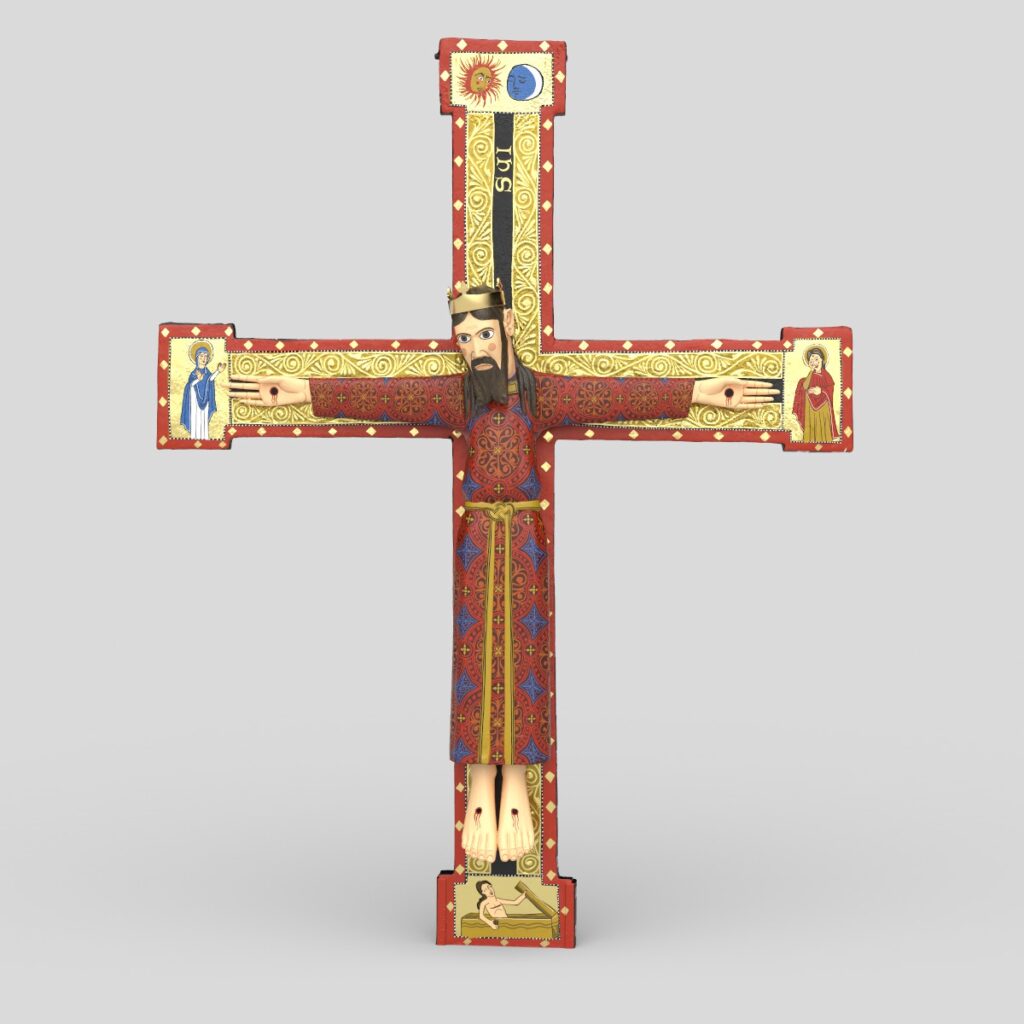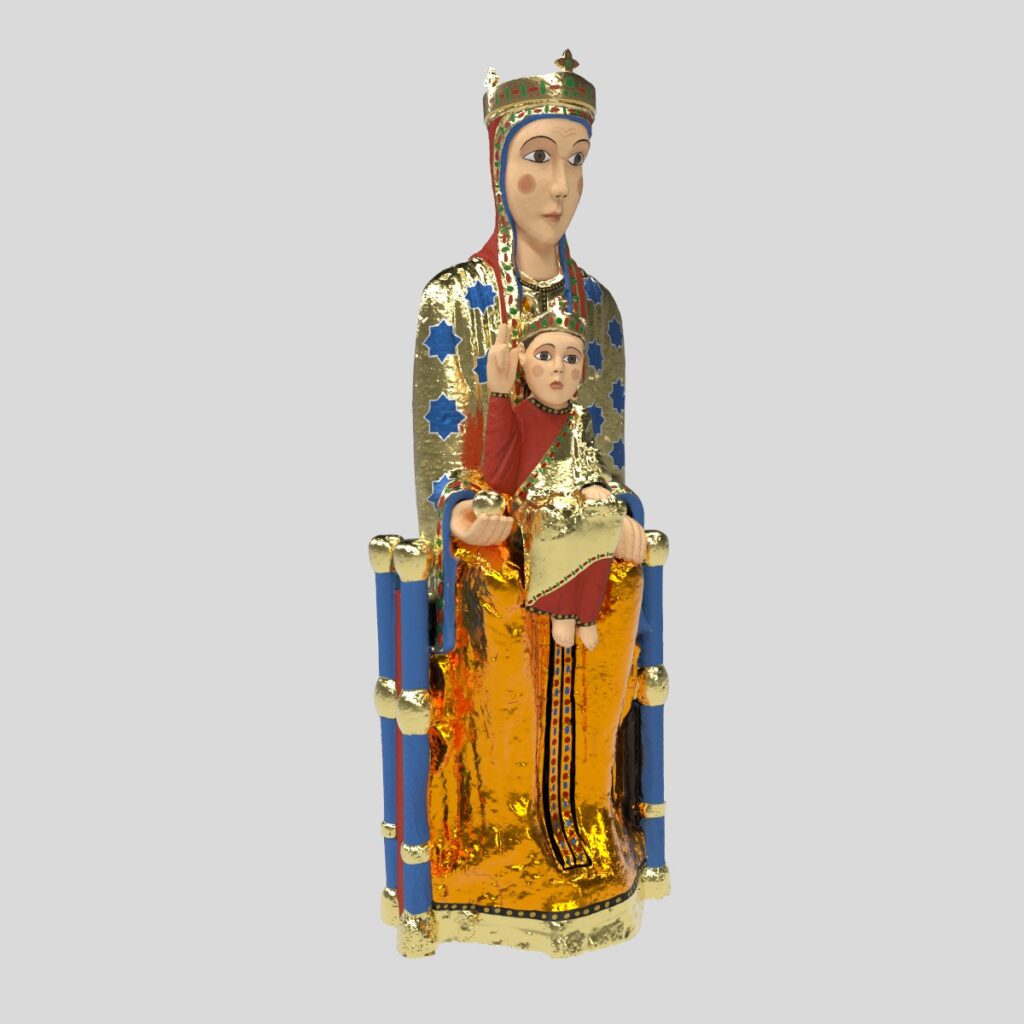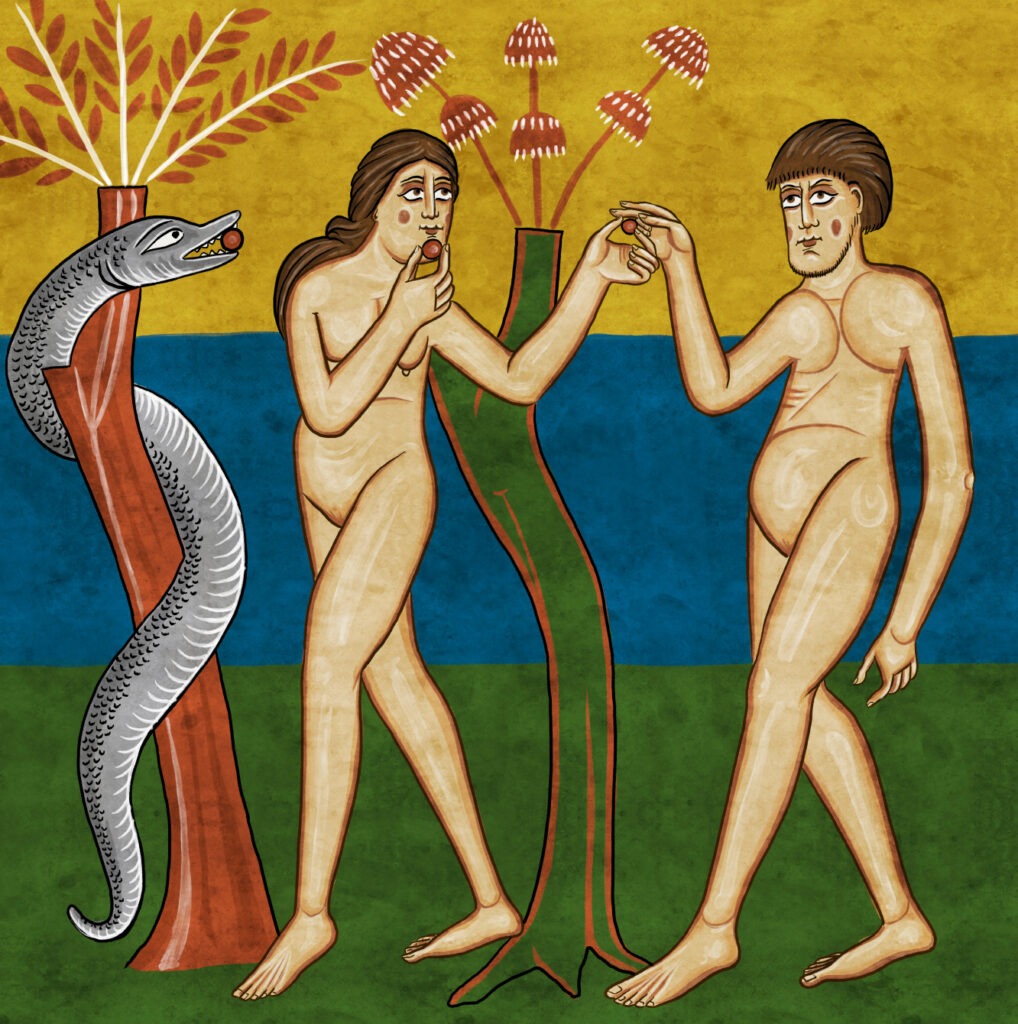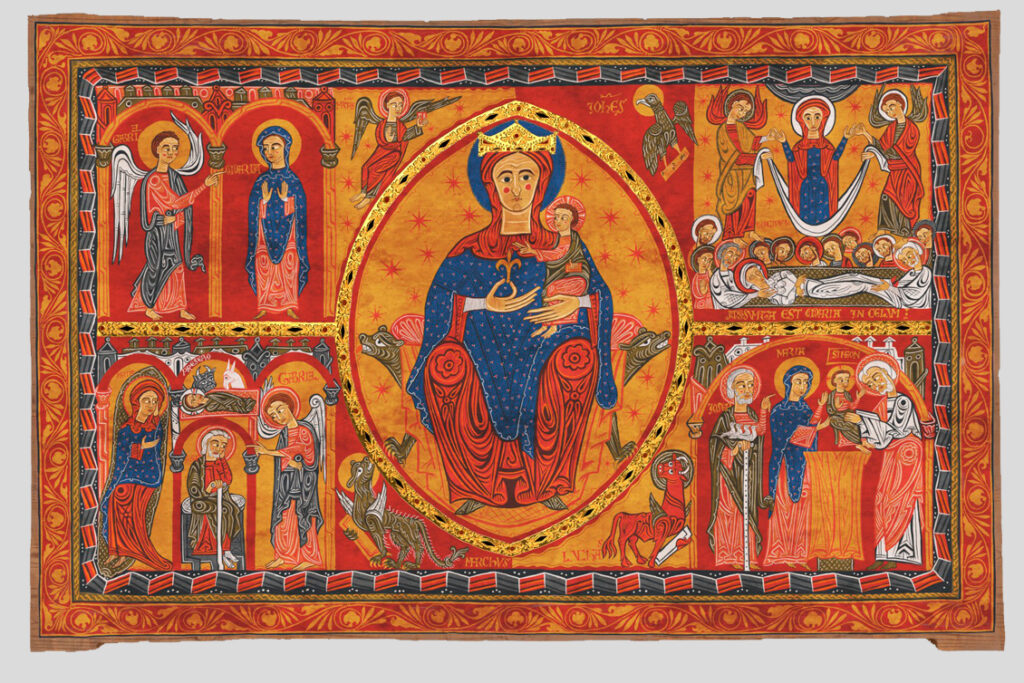'Today, a Thousand Years Ago' is a project that seeks to provide an immersive experience to the visitors of the Museum of Medieval Art (MEV). Through an immersive space, visitors can travel back in time to the 12th century and connect emotionally with medieval art.
Through the virtual recreation of a painter's workshop, the streets and the romanesque cathedral of Vic, viewers discover a world, the medieval art, rich in colors, light and mystery, allowing a new understanding and appreciation of different pieces from the museum's collection.

